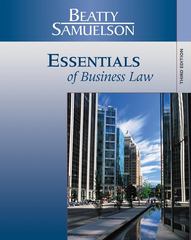Question
Consider a market where two firms sell a homogeneous good. The total inverse demand for this good is ?(?) = 120 ? ?, where ?
Consider a market where two firms sell a homogeneous good. The total inverse demand for this good is ?(?) = 120 ? ?, where ? = ?1 + ?2 is the total output (that is, the sum of each firm's output). Both firms have zero fixed costs and a constant marginal cost of 20.
a) Suppose that firms simultaneously choose how much to produce. Calculate the equilibrium quantity produced by each firm?
b) Now, suppose one firm is a leader whereas the other one is a follower. The leader chooses how much to produce first. Then, after observing the leader's production decision, the follower decides how much to produce. Calculate the quantity that each firm produces.
c) Suppose the companies decide to form a cartel to maximize their joint profits. Calculate the quantity produced by the Cartel.
d) Now, suppose the firms compete by simultaneously setting prices. Since the good is homogeneous, the firm setting the lowest price captures the entire market demand. What is the equilibrium price and the total quantity sold?
e) Which of the market structures described in parts (a)-(d) is the most efficient?
f) Which of the market structures described in parts (a)-(d) gives firms the highest profits?

Step by Step Solution
There are 3 Steps involved in it
Step: 1

Get Instant Access to Expert-Tailored Solutions
See step-by-step solutions with expert insights and AI powered tools for academic success
Step: 2

Step: 3

Ace Your Homework with AI
Get the answers you need in no time with our AI-driven, step-by-step assistance
Get Started


